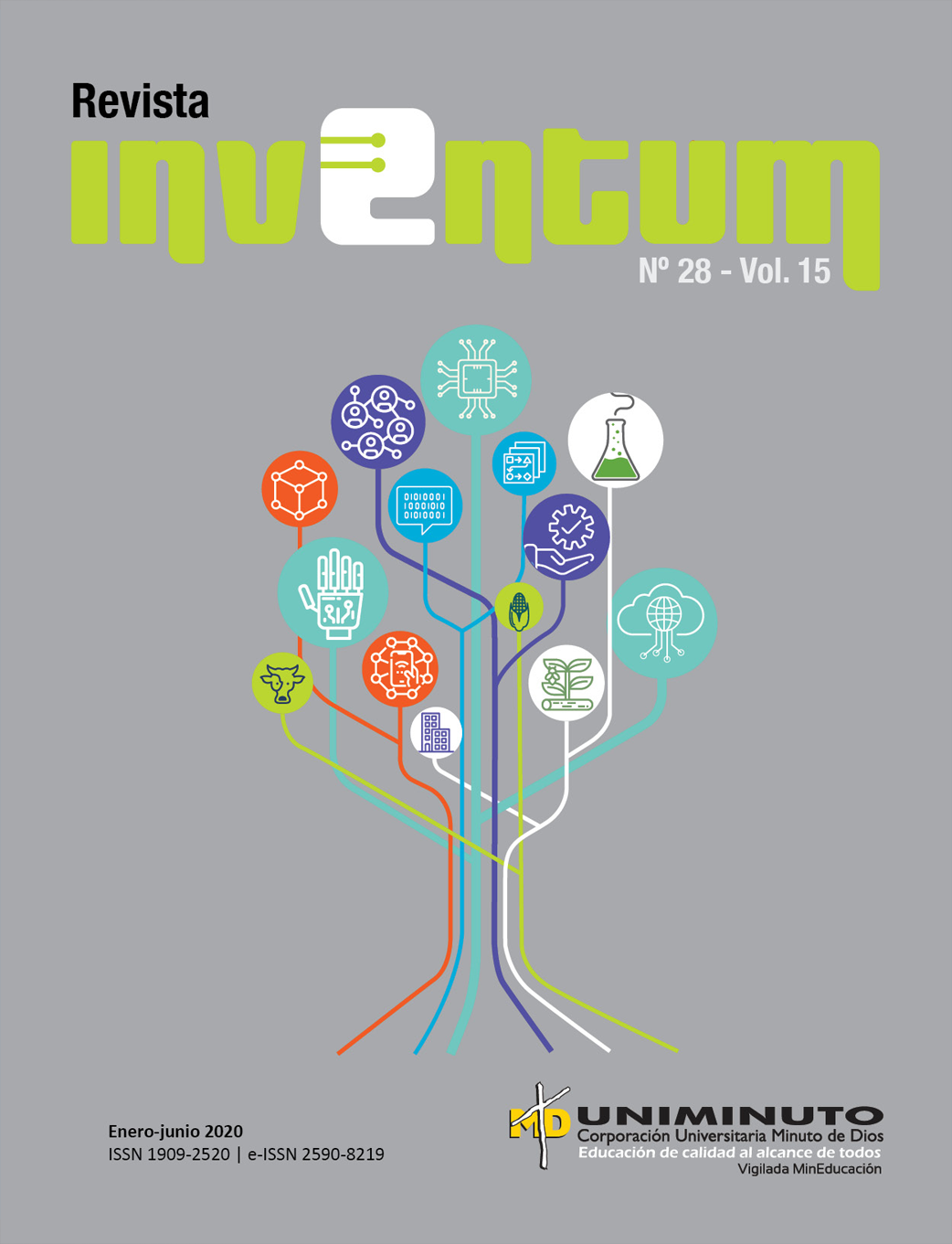La manufactura aditiva como potenciador de los sistemas productivos
Barra lateral del artículo
Cómo citar
Detalles del artículo
Se solicita a los autores que diligencien el documento de cesión de derechos de autor sobre el artículo, para que sea posible su edición, publicación y distribución en cualquier medio y modalidad: medios electrónicos, CD ROM, impresos o cualquier otra forma, con fines exclusivamente científicos, educativos y culturales
- La obra pertenece a UNIMINUTO.
- Dada la naturaleza de UNIMINUTO como Institución de Educación Superior, con un modelo universitario innovador para ofrecer Educación de alta calidad, de fácil acceso, integral y flexible; para formar profesionales altamente competentes, éticamente responsables y líderes de procesos de transformación social, EL CEDENTE ha decidido ceder los derechos patrimoniales de su OBRA, que adelante se detalla para que sea explotado por ésta
- El querer de EL CEDENTE es ceder a título gratuito los derechos patrimoniales de la OBRA a UNIMINUTO con fines académicos.
Contenido principal del artículo
Resumen
Actualmente, el desarrollo de los nuevos productos necesita de un diseño y manufactura basados en métodos avanzados de producción, y es así como aparece un nuevo enfoque de trabajo conocido como la manufactura aditiva. En este artículo se pretende hacer una revisión de la integración de la manufactura aditiva a las nuevas formas de operación, cuyo objetivo principal es obtener un enfoque preciso en la ingeniería asistida por computadora, con un método del elemento finito y los procesos que conlleva, para así conseguir el producto adecuado y reducir los costos de impresión y tiempo de procesamiento.
Para ello se introduce el uso de sistemas CAD/CAE/CAM, que por sus siglas en inglés significan lo siguiente: Computer Aided Design (CAD), Computer Aided Engineering (CAE) Computer Aided Manufacturing (CAM) como herramienta de diseño y manufactura de procesos. La aplicación de estas herramientas está inmersa en la Industria 4.0, y en este documento se muestra lo que implica la generación de modelos en tres dimensiones, así como la realización de pruebas de funcionalidad de prototipos en diferentes situaciones, así como la ayuda en la obtención de resultados confiables en el diseño de cualquier sistema tecnológico e innovador.
Referencias
[2] Company, I. H. (1990). “Systems life cycle engineering”, Manufacturing Technologies, vol, 13, pp. 83-93.
[3] M. O. Coronado, TRIZ, la metodología más moderna para inventar o innovar tecnológicamente de manera sistemática, México. D.F.: Panorama, 2005.
[4] J. Alcaide Marzal, J. A. Diego Más, y A. Ramírez, Diseño de producto. Métodos y técnicas, Valencia: Universidad Politécnica de Valencia., 2001.
[5] Y. Allen, R. (1996), Materials Processing, Journal of Materials Processing Technology, vol. 13 pp. 181-186.
[6] E. A. Abdulrahman Al-Ahmari, Computer-Aided Inspection Planning, EUA: CRC Press, 2017.
[7] L. G. Antoni Garrell, La Industria 4.0 en la sociedad digital, Barcelona: Marge Books, 2019.
[8] D. A. Barclay I. “Concurrent Engineering: Research and Applications. Management and Organizational Factors in New Product Development
(NPD)”, Success, vol. 8, n°. 2, pp. 115-132, 2000.
[9] F. Bianconi, P. Conti, & L. Di Angelo, “Interoperability among CAD/CAM/CAE systems: a review of current research trends”, Geometric Modeling and Imaging--New Trends, vol. 10, n°. 11, pp. 82-89, 2004.
[10] F. Bianconi, P. C., “Interoperability among CAD/CAM/CAE Systems: A Review of Current Research Trends”, Geometric Modeling and Imaging--New Trends, vol. 10, n°. 9, pp. 82-89, 2006.
[11] R. P. Fernández y J. Á. Herrero, “La gestión de la Industria 4.0 a través de las herramientas CAD/CAM/CAE”, Ingeniería Naval, n°. 970, pp. 68-74, 2018.
[12] J. Torres y I. Pastor, “Fabricación avanzada, más allá de la Industria 4.0”, Minsalt, n°. 4, pp. 12-13, 2016.
[13] M. Groover y E. Zimmers, CAD/CAM: Computer-Aided Design and Manufacturing. Prentice Hall International Inc., 2006.
[14] L.L. Delgado, Interacción de sistemas CAD/CAE en estructuras, tesis de grado, Universidad Autónoma de Chihuahua, México, 1994.
[15] M. Groover y E. Z. CAD/CAM: Computer-Aided Design and Manufacturing, New Jersey: Prentice Hill, 2008.
[16] C. Machover, The CAD/CAM Handbook, USA: McGraw-Hill, 1995.
[17] A., Molina y E. T. “Modelling Manufacturing Capability to Support Concurrent Engineering”, Concurrent Engineering: Research and Applications, vol. 3, n°. 1, pp. 29-42,1995.
[18] A. Molina, A.-A., “Research in Engineering Design”, A Review of Computer Aided Simultaneous Engineering Systems, vol. 1, n°. 7, pp. 38-63, 1995.
[19] Moldflow Corporation. (2003). “¿Cómo predecir problemas de manufactura y optimizar procesos de diseño en el moldeo por inyección?”. [En línea]. Disponible en: http://www.plastico.com/temas/Como-predecir-problemas-de-manufactura-y-optimizar-procesos-de-diseno-en-el-moldeo-por-inyeccion+3029748
[20] C. Dym, P. Little, R. Navarra, El proceso de diseño en ingeniería. Cómo desarrollar soluciones efectivas, México: Limusa Wiley, 2002.
[21] O. Putnam, “A redesign for engineering”, Harvard Bussiness Review, vol. 01, pp. 139-144, 1985.
[22] L. K. Keys, “Design for manufacture design for the life cycle engineering”, Fifth IEEE/CHMT International Electronic Manufacturing Technology Symposium, 1988, ‘Design-to-Manufacturing Transfer Cycle, Lake Buena Vista, FL, USA, 1988, pp. 62-72.
[23] R. Udroiu, Computer-aided Technologies. Croatia: IntechOpen, 2016.
[24] I. Zeid, CAD/CAM Theory and Practice. México MacGraw-Hill Inc., 2009.





